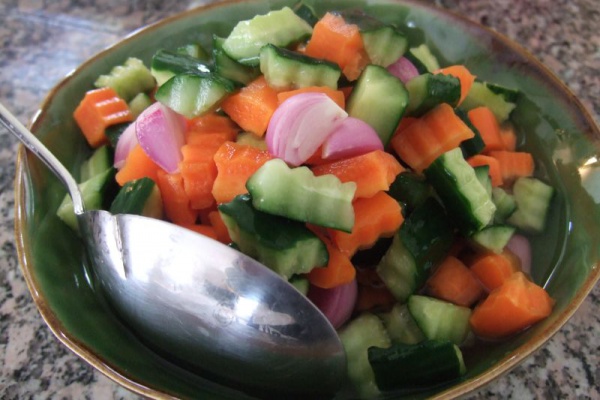Facts About Acar
Acar is a delightful vegetable pickle originating from Indonesia, which has also gained popularity in Malaysia, Singapore, and Brunei. This delectable treat represents a localized take on the Indian Achaar and is referred to as atjar in Dutch cuisine. Typically, acar is prepared in large batches and can be stored in a sealed glass jar in the refrigerator for up to a week. It serves as a versatile condiment that complements a variety of meals wonderfully.
The tradition of pickling dates back to around 2400 BCE in India and disseminated to Southeast Asia through cultural exchanges and trade routes. In Southeast Asia, acar is made from vegetables such as cucumber, carrots, cabbage, shallots, chili peppers, and beans, which are pickled in vinegar with added ingredients like kaffir lime and dried chilies. This vibrant mixture is often served alongside dishes like fried rice, satay, and soto, adding a refreshing crunch and tanginess.
In Indonesia, acar typically includes cucumber, carrots, shallots, chili peppers, and sometimes pineapple, all marinated in a sweet and sour solution. It can be enjoyed both as a condiment and as a standalone dish. In Malaysia, variations such as Acar Awak and Malay acar are commonly found. Acar Awak is particularly elaborate, featuring a broader array of vegetables and spices. This beloved pickle has even permeated Thai cuisine as achat, frequently served as a side dish with satay.
Interestingly, a variation known as atchar became popular in South Africa, brought there by Indian and Malay slaves under British colonial rule. The South African version typically utilizes green mangoes, offering a distinct twist on the traditional recipe.

 Papua New Guinea
Papua New Guinea